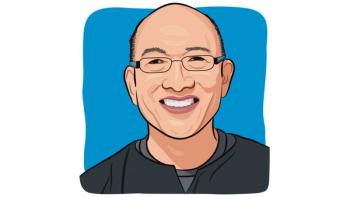
Breast Cancer Survivor Reflects on Mammogram Hesitancy Through the Lens of COVID-19
How does COVID-19 vaccine hesitancy relate to fear of mammograms for breast cancer? A cancer survivor explains the connection.
Mammogram hesitancy is not the same as vaccine hesitancy but can teach us a little about why some fear modern medicine.
While each of us should work with a medical professional to decide on screening protocols, I tend to advocate for breast screening when somebody is hesitant. Despite the fact that I, like other survivors, am a walking advertisement for the fact that a yearly mammogram can save a life, I do not always succeed. Mammogram hesitancy is real.
In my early 50s, tired of surveillance because of risk factors, I decided to screen every other year or so. Even I was developing mammogram hesitancy. Then I thought of my mother’s modest advice: “Mammograms really do help.” I am glad I listened. From one year’s mammogram to the next, I progressed to invasive ductal carcinoma with multiple tumors in one breast as well as spread to lymph nodes.
Because of the fateful screening mammogram, I underwent a modified unilateral mastectomy, chemotherapy, immunotherapy and radiation. Now, of course, I live with monitoring: screening mammograms, occasional MRIs, bloodwork, etc. Will cancer come back? Will I, unlike so many friends or family members with cancer, get to live to a ripe old age?
The most important thing truly is, I learned from a nurse during cancer treatment, that I am alive today. As the Christian Bible, in words that sound Buddhist, says, “Do not worry about tomorrow; let tomorrow worry about itself. Each day shares enough trouble of its own.” Each day, every day, I am thankful to be a survivor.
Still, if my experience, along with medical advice from professionals, is not enough to influence reluctant friends and family members to consider routine mammograms, what is? I am working on an answer to that question. Watching vaccine hesitancy with COVID-19, I have begun to understand this mammogram hesitancy a little more. There is a little overlap in reasons, especially misinformation and/or the belief that one is invulnerable to cancer (or COVID-19).
Some have told me to my cancer-surviving face that mammograms cause breast cancer. Others believe that if there is no breast cancer in their family history, the mammogram is not worth the bother (especially if they think it will give them breast cancer). “So much breast cancer is not hereditary,” I try to say. Others worry that the mammogram will hurt or believe they would just “know” if they had breast cancer.
Even if it feels like a slap in the face to listen to people explain why they choose not to get mammograms (ever), I will continue to be an advocate. That said, even the American Cancer Society offers a caveat in its
As for “potential harms,” I will be the first to admit that sometimes in a worrisome mood I wonder if I am in that minute percentage of women whom radiation harmed. Then I think of my family history, my genes, my mother and all the people I know whose lives have benefitted from screening mammograms. Perhaps the best solace resides in my remaining breast, which has remained healthy through screening mammograms, though I will be the first to admit that sometimes it feels like more trouble than it is worth.
If you are trying to convince a loved one to get a screening mammogram,
For more news on cancer updates, research and education, don’t forget to




